Young and Dyslexic? You’ve got it going on is currently taught on the Edexcel GCSE/IGCSE English Language Paper 1 curriculum. It is one of the 10 non-fiction texts which students answer on in Section A. This guide to teaching the extract includes resources, ideas and teaching tips. The Young and Dyslexic analysis and resources pack contains editable Google Slides, line-by-line annotations, practice exam questions with a mark scheme and quiz questions with an answer key. All resources are available as downloadable PDFs and as editable Google documents so that you can alter them to suit your students.
In summary, Young and Dyslexic is a newspaper article, published in The Guardian in 2015. It is adapted from Zephaniah’s contribution to Creative, Successful, Dyslexic, a book about overcoming the challenges associated with dyslexia. Benjamin Zephaniah recounts a series of humorous anecdotes, documenting his challenges at school, his dyslexia discovery and subsequent successes.
Zephaniah uses irony to show that despite being criticised and mocked at school, he published books and poetry and became a professor. But how can we support students to capture that in their exam essays? How can we break it down to consider how Zephaniah offers the readers hope? Or the language and structure techniques he uses to lighten a serious topic?
Young and Dyslexic IGCSE Analysis and Resources
As a GCSE examiner of 11+ years, I aim to create resources to help students improve their exam scores. So, I’ve created a scheme of work to take you step-by-step through the text from the angle of exam performance. It contains everything from an engaging, thought-provoking starter, to language techniques, to analysing and annotating the extract. There are also practice GCSE questions on the text, including scaffolds, rubrics and model answers for Paper 1 questions 1-4.
In a nutshell, this resource contains editable slides, quizzes, answer keys, exam questions and annotations of the whole GCSE extract. Furthermore, all activities are ready to download and print in PDF form or there are links for you to personalise them if you wish.
Edexcel IGCSE English Language Exam Paper 1
The 2 hour 15 minutes Edexcel IGCSE English Language Paper 1 exam is split into Section A and Section B. Section A is the reading assessment and candidates are presented with one of the 10 non-fiction Anthology texts and one thematically linked unseen text. The texts are between 1.5 and 2.5 pages long. They have 5 questions to answer in Section A:
- A 2 -mark retrieval question. The skill being assessed in this question is lifting and copying two brief and relevant quotes from the unseen text.
- A 4-mark summary question. Candidates are asked to paraphrase a certain event, character or theme from the unseen text.
- A 5-mark ‘SQUID’ question (it’s an acronym not a slimy sea creature!). Students identify five distinct details from the unseen text and use quotations to support their points.
- A 12-mark extended analytical response on the seen text.
- A 22-mark comparative essay, usually based on the writers’ perspectives, experiences or feelings.
Section B is a writing assessment. Candidates choose between two options, which are normally loosely based on the Section A texts. The text types include a letter, article, speech or leaflet. Both Section A and Section B are equally weighted, worth 45 marks each.
Young and Dyslexic Themes and Vocabulary
To start teaching this extract, I introduce the misconceptions associated with dyslexia by showing students images of famous celebrities. Then, I ask the class to figure out what the range of celebrities have in common. If you don’t disclose which text you will be studying that lesson, students usually struggle to guess the commonality.
After revealing that the celebrities have all received a dyslexia diagnosis, we have a general discussion about whether they were surprised and why or why not. Next, I provide students with vocabulary to engage in an informed discussion by doing a quick matching activity. We also look at the definition of dyslexia from the International Dyslexia Association to avoid misunderstandings of how dyslexia affects people.
Subsequently, we discuss the challenges a dyslexic person might face and how the condition may be an advantage. In my experience, students come up with a variety of interesting ideas which foreground their understanding of the extract. Finally, I share some biographical information about Benjamin Zephaniah as the article is an autobiographical account of his experiences with dyslexia.
Edexcel IGCSE Young and Dyslexic Language and Structure Features
Before diving into the text, I quickly review key language techniques in the extract so that they are fresh in students’ minds as they read. For this text, I have included key techniques and definitions for 8 techniques used by the writer to create effects. This Young and Dyslexic analysis and resources pack includes a matching activity as a PDF worksheet and on the Google slides. Students match the definition and technique, which they can either copy, cut and paste or simply number. As an extension, students can write their own examples of the techniques.
Should your students know the techniques well, you could skip the matching activity and just have them write their own examples. If time is limited, you could ask each pair/group to write a definition for one of the techniques then share out. This is also a useful revision tool for Young and Dyslexic? You’ve got it going on and any of the other texts assessed at GCSE.
Young and Dyslexic line-by-line annotations
Prior to close textual analysis, I often ask students to do an initial reading with two different coloured highlighters. They highlight language which portrays the challenges of dyslexia in one colour, and Zephaniah’s successes in another. You could also ask students to spot the techniques reviewed in the previous activity.
It’s a fairly straightforward text for students to understand on a surface level. Benjamin Zephaniah gives a chronological account of his struggles with school, how he overcame the challenges and became successful. The more challenging skill comes in unpacking the irony in Zephaniah’s article. Plus, how he uses humour and humility to build ethos and gently motivate, persuade and challenge the reader.
When it comes to closely analysing the text of the extract, there are a few ways of approaching the activity. You can read and annotate together with students completing the annotations in real time. Alternatively, you can split students into groups and ask each group to focus on a certain paragraph before sharing out. Or you could read and discuss, then ask students to complete the annotations for homework.
There are many ways of approaching close textual analysis. I find that varying the method for different texts keeps students interested through the unit. This Young and Dyslexic analysis and resources pack contains detailed line-by-line annotations for you to share with students.
Assessment for Learning Quiz Questions and Answer Key
After analysing the text, I do a quick assessment for learning quiz with students to assess their understanding of the language and structure of the text. Then, I introduce exam practice questions. Quiz questions for a straightforward low stakes true and false quiz with answers are available on the slides and in PDF form with this Young and Dyslexic scheme of work. This can be done as a whole class activity on the interactive whiteboard or handed out to students to do in pairs or individually, depending on your time and the nature of your class.
Young and Dyslexic Exam Questions
Even though questions 1, 2 and 3 of Section A of the language paper assess students’ understanding of an unseen text, I still practise these questions for the studied texts. It saves on time when you have 10 non-fiction texts to study in a short time. For some of the texts, I give students questions in the style of question 1, 2 and 3. For other texts, we do question 4 and for some we do the comparative question 5 response.
For ‘Young and Dyslexic, I have written questions that are structured similarly to questions 1, 2 and 3 from the language paper. I have included a framework for students to structure their answers in the Young and Dyslexic analysis and resources pack. There are also model answers for them to use to either self or peer-assess. I find peer assessment works particularly well for questions 1, 2 and 3 of the language paper, the lower stakes questions worth fewer marks. Students gain confidence marking these shorter answers which they can then apply to assessing the longer responses.
IGCSE Past Paper Questions and Model Answer
For this text, I have included a sample question 4 (12-mark essay question on the seen text). Language Paper 1 comprises of 5 questions. I cover all the question types over the course of teaching the 10 texts.
In terms of question 4, firstly, take students through the rubric so that they familiarise themselves with how the response is awarded. Then, you can take students through the example PETER paragraph (point, evidence, technique, explain, refer). Provide prompts so that they can organise their ideas before they attempt to answer the extended essay. This way, there are scaffolds in place to support students to produce high quality responses.
After the class has written the answer under timed conditions, ask them to self or peer assess their responses against the rubric. You may want to mark their work too. In order for them to see how to develop an essay, I have included a 5-mark example response in this resource pack. It’s useful for students to mark imperfect answers to get experience of applying the mark scheme. I would ask them to give a mark and some feedback. As an extension, students can improve the example answer. This is also a good revision activity. In addition, you can use this as an opportunity to model in real time how you would improve the response.
Young and Dyslexic Edexcel Mark Scheme
For this Young and Dyslexic analysis and resource pack, I’ve also included a full-mark answer. I ask students to mark the example essay, then compare it to their own work for quality, writing style, use of quotations and range of points made. Students will then hone and develop the skill of improving their own responses to bridge the gap between where they are and what is required to achieve full marks. They can also look at the half-marks and full-mark answer to see what the student who achieved full marks has done differently.
When they are reviewing their answers, you may want to encourage them to ensure multiple relevant quotations support a range of clear points, subject terminology is identified and discussed, and arguments are developed. There are examiner notes included under the Google Slides.
Edexcel GCSE English Language Transactional Writing Practice
There are also a couple of creative activities included in
this resource. Time-permitting, you could use it as a class activity if you
feel that students aren’t connecting with the text. They could also complete it
as a homework assignment or an extension activity to challenge students to
broaden their perceptions of the text. This can help develop skills required
for Section B of Paper 1 (Transactional Writing) and Section B of Paper 2
(Imaginative Writing).
Young and Dyslexic IGCSE Lesson Activities, Resources and Revision
To sum up, some of the best techniques for teaching the 10 non-fiction texts and creating great revision resources for students include:
- Hook students with an intriguing starter activity
- Use alternative methods to closely analyse and annotate the text
- Quiz students for quick AFL to assess whether they are engaging with the text
- Practise either questions 1-3, question 4 or question 5 from the Language paper
- Study model answers, including examples of typical mistakes students make in the exam responses
- Offer an optional creative activity as homework or an extension to challenge students’ perceptions of the text
Good luck teaching Young and Dyslexic – it’s an engaging and humorous article. I love the message to all students, dyslexic or not, about overcoming challenges and achieving success despite obstacles. Comment below if you can add any useful teaching and learning techniques for this text.
If you enjoyed this article about teaching ‘Young and Dyslexic’, you might also find value in my Edexcel IGCSE Paper 2 guides and resources for ‘Out, out-‘ and ‘Disabled’. There are also Edexcel IGCSE English Language Paper 1 guides and schemes of work for many of the set texts, including Explorers or Boys Messing About and A Game of Polo with a Headless Goat. Thank you for reading and follow my store for more as resources are constantly being added.



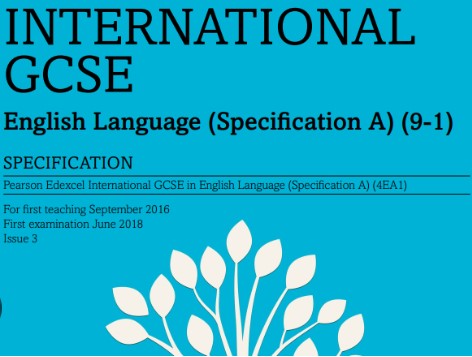
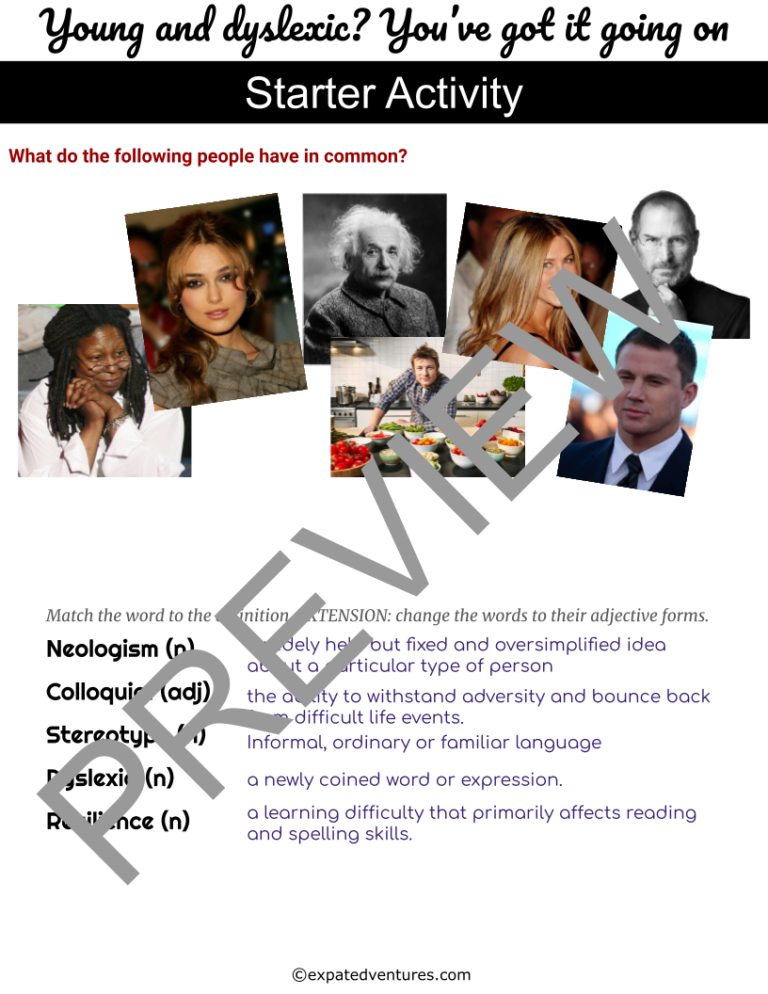
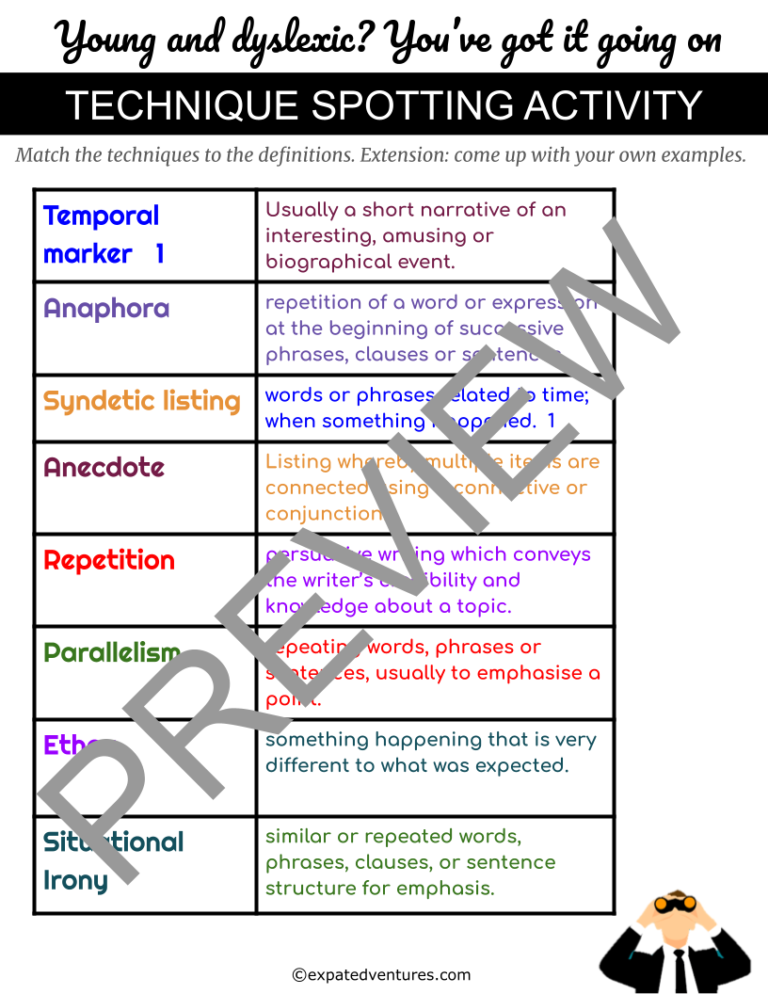

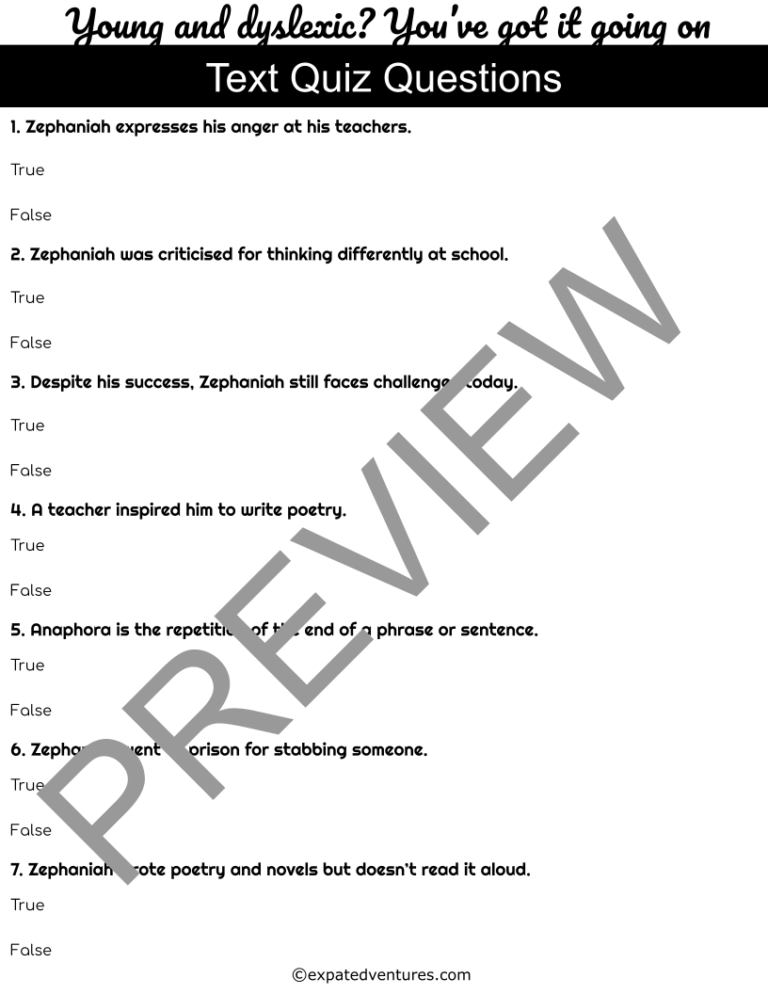
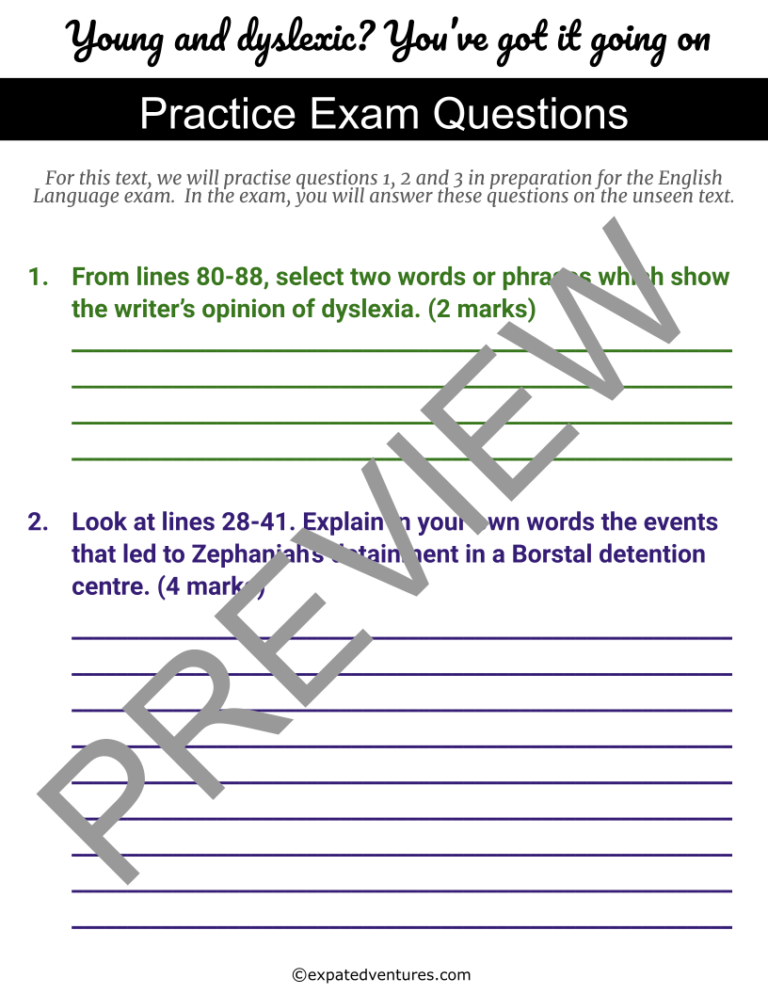
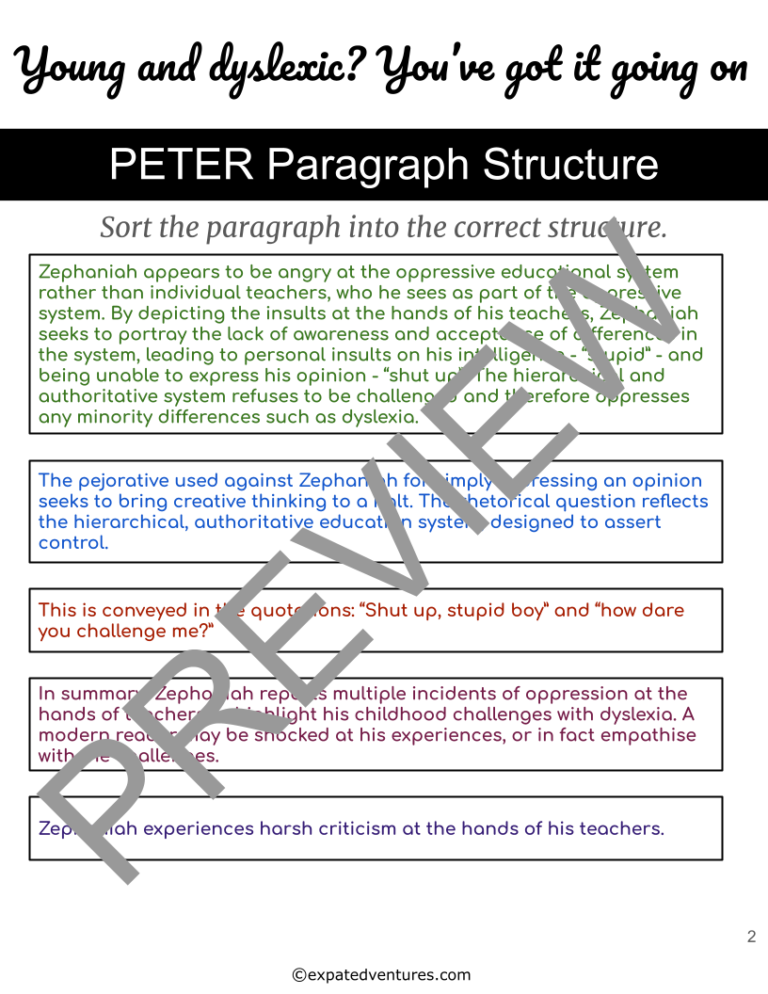
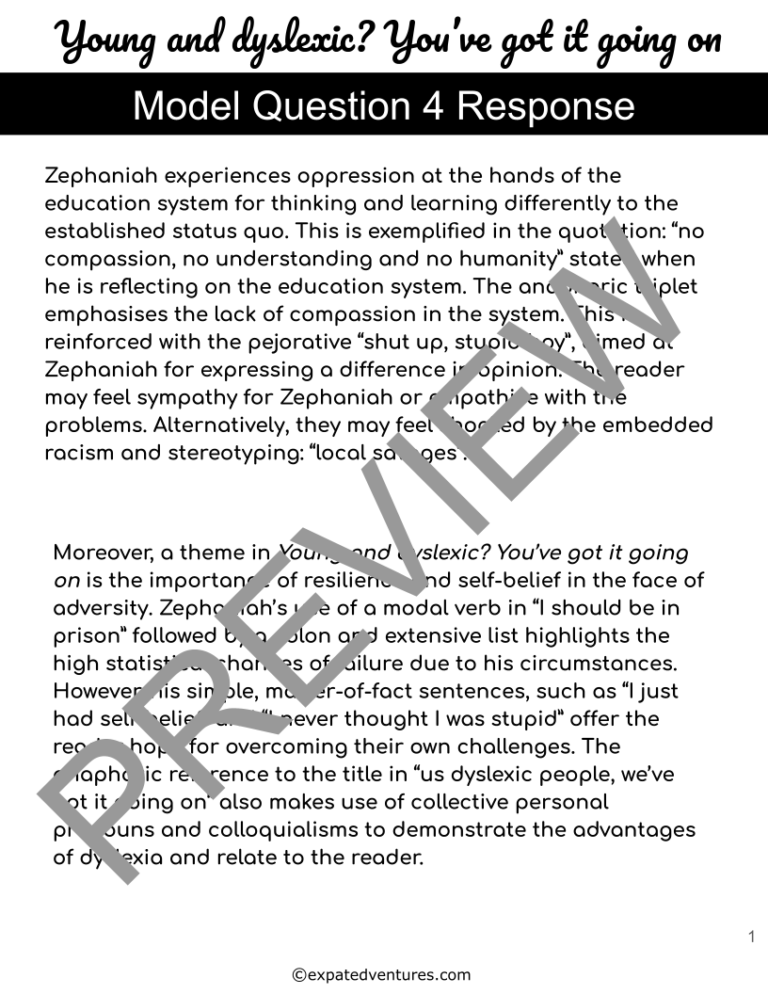
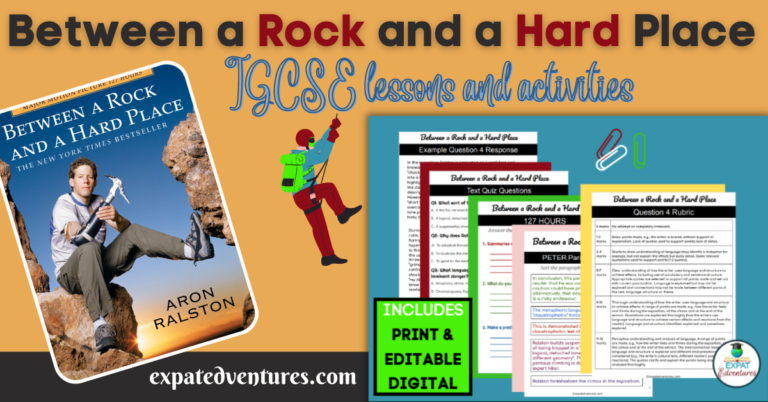
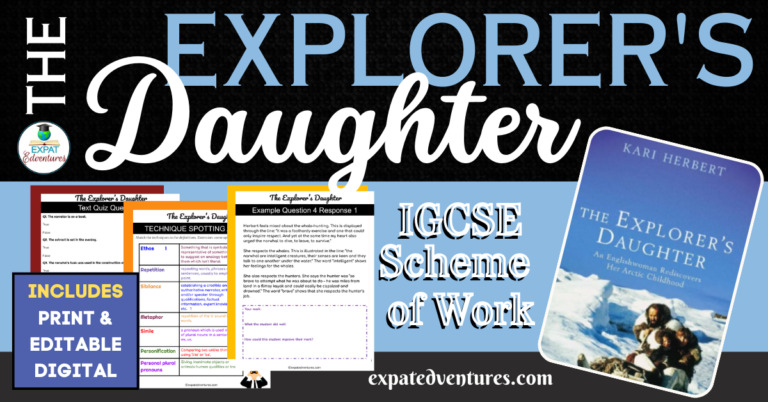

Pingback: GCSE Letter Writing Scheme of Work - Expat Edventures